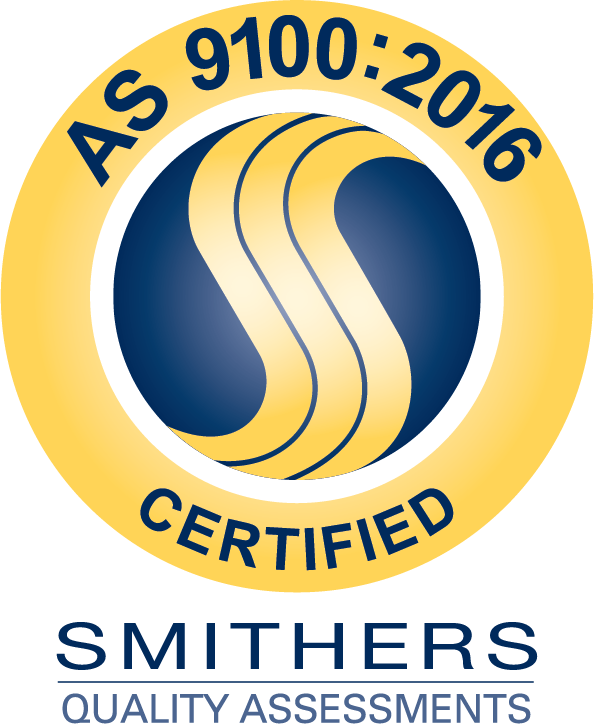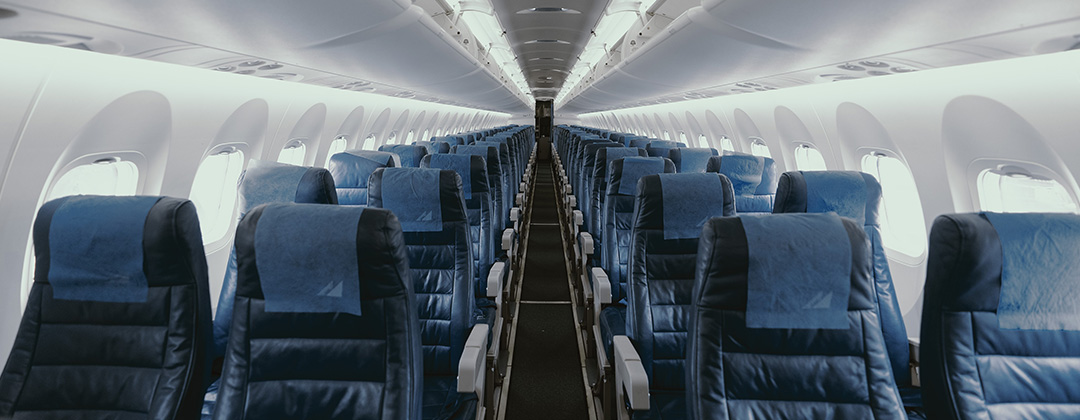Airplanes transport hundreds of millions of people each year. With commercial jets being such a popular mode of public transportation, passengers put their trust in aircraft manufacturers and airlines to get them safely from point A to point B.
This is why aircraft interior materials and aircraft insulation must meet stringent, complex regulations and undergo rigorous testing before being implemented in any type of civilian aircraft.
Aircraft Interior Materials And Airplane Safety Priorities
The aviation industry is comprised of regulators, operators and manufacturers. Over the years they’ve come together to maximize safety by sharing knowledge and targeting their efforts. Thus the industry’s work on airplane interiors emphasizes three core areas of safety and survivability:
1. Surviving Impact
In the case of impact, survivability can heavily depend on seat design. A seat should remain in place and be able to absorb energy during impact while protecting against head injury. Aircraft manufacturers must put protections in place so that the likelihood of head injury does not exceed the head injury criterion (HIC*) limit established by the Federal Aviation Administration (FAA).
*HIC measures the likelihood of head injury occurring due to an impact.
2. Surviving Fire
Among aircraft interior materials, paneling plays a key role in fire safety. The FAA’s test standard for large surface area panels (ceilings, walls, partitions and overhead bins) requires all airplanes produced after August 20, 1988, to utilize the following:
- Panels that reduce heat and smoke emissions
- Panels that delay simultaneous or near-simultaneous ignition of flammable material in an enclosed space
In addition to the above standards, aircraft must also meet the following fire safety standards:
- Use of fire-protective materials
- Inclusion of insulation blankets designed to resist burn-through
- Smoke detection and fire extinguishing systems
3. Evacuation
The FAA has mandated that an airplane must be able to be evacuated of all passengers in 90 seconds in the case of an emergency. The following materials help to facilitate and speed up this process:
- Emergency Proximity Lighting. This lighting helps guide passengers toward exits when in smoke-filled cabins.
- Escape Slides. Inflated slides resist burning and help passengers escape quickly.
- Fire-Retardant Insulation. Aircraft insulation helps to slow down the burn-through of a fire outside the airplane.
- Fire-Retardant Materials. Specialized, fire-retardant materials are used for airplane insulation, carpets, cabin sidewalls, stow bins and stowage compartments. Fire-blocking and fire-retardant materials are also used as seat cushion covers.
Common Standards For Evaluating Aircraft Interior Materials
FAA Regulations
The FAA is a national authority with powers to regulate all aspects of civil aviation. It is an operating branch of the U.S. Department of Transportation.
Under FAA regulations, a part must be issued a specific-type approval. Aircraft interior materials must meet FAA standards that are specific to their role. These standards cover all aircraft parts, and their approval will fall into one of two categories: Original Equipment Manufacturer (OEM) Type Certification or Parts Manufacturing Approval (PMA).
OEM Type Certification
The only holder of a Type Certificate (TC) for any aircraft is the OEM. The OEM can thus produce parts under the TC. Each part, from engine components to aircraft insulation material, must be properly labeled, documented and shown to meet the original approval standards. The Type Certificate indicates that the OEM’s part(s) work safely once installed in the aircraft for which they were designed. At Duracote, our products adhere to the strict quality specifications and OEM certifications for all aviation markets.
FAA-Issued PMA
In contrast, parts made under PMA can be manufactured by any person or company. But in doing so, they must undertake the process of designing, creating and thoroughly documenting the part’s equivalency or superiority to the OEM part. The process is as follows:
- The manufacturer must submit their part or material design to the FAA for review. During the review, it will be determined whether the part or material is safe and meets all requirements of FAA regulations. The part must be equal to or better than the original. The new design also cannot infringe on the current OEM part’s patent.
- Following design approval, the PMA supplier needs to pass an FAA review of the quality assurance system that is used in the production of the proposed part or material. This review will verify that there is a proper quality assurance system in place and that each part manufactured adheres to the FAA-approved design.
FAA Advisory Circulars
The FAA also creates Advisory Circulars (ACs) to decide upon and share acceptable means to test aircraft interior materials for things like flammability and crashworthiness. But these are not the only acceptable methods for demonstrating regulatory compliance. Keep in mind that the guidance put forth in Advisory Circulars are not necessarily mandatory and are not considered mandated regulations.
Boeing Regulations And Testing
The Boeing Company has become known as a leader in aircraft safety and has developed its own set of guidelines and testing procedures that may be considered a model for other manufacturers. If a part or material is Boeing approved, it’s a sign of high safety standards.
The company also works directly with the FAA to develop and update standardized testing methods to ensure Boeing products, as well as other aircraft products, are safe. In fact, the FAA typically makes the regulations or testing methods recommended by Boeing mandatory.
Boeing’s regulations for interior materials (similar to the industry’s) focus on impact and fire survival, as well as ease of evacuation. For example, Boeing follows an FAA regulation that an airplane can be evacuated of all passengers in 90 seconds. Aircraft interior materials are critical to making this escape time possible, with seat covers, carpet and insulation all required to be fire retardant.
Boeing airplanes and their interior materials are rigorously tested to ensure they meet and/or exceed design standards and certification requirements. Escape slides, for example, undergo permeability testing, burst pressure testing, environmental testing, life cycle testing and much more.
During airplane fatigue testing, the entire aircraft is subjected to up to three lifetimes of normal wear and tear in order to validate durability. These tests help establish operator maintenance and repair schedules to maintain a safe and secure aircraft. Testing is conducted in labs, icing tunnels, wind tunnels, on the ground and during flight. It can take months or even years to test a new airplane design.
Boeing’s ongoing work with regulators has resulted in aircraft interiors that are designed to increase survivability of both takeoff and landing-related accidents.
Meet and Exceed Safety Regulations with Duracote
Create compliant, custom aircraft interior materials for almost any application, from aircraft insulation to bulkhead lining. Duracote can help. Safety is our top priority, which is why we’re an FAA- and Boeing-approved radiant panel testing facility. We work hard to create fire-retardant materials that deliver fire safety performance and regulatory compliance without compromising on your other priorities, including aesthetics and durability. Have a question or need more information? Reach out to our customer service team today.

